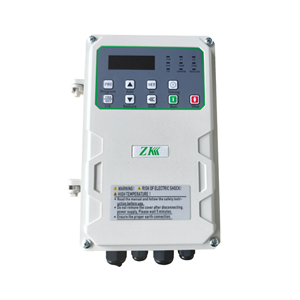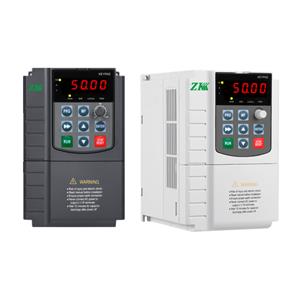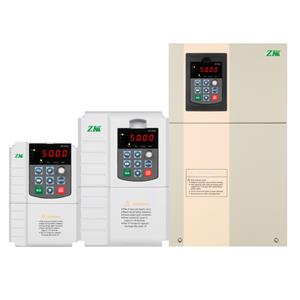The Future of Universal Industrial Inverters: Innovations Driving Efficiency and Sustainability
The variable frequency inverter (VFI),a cornerstone of modern industrial automation,is undergoing a transformative evolution. As industries worldwide prioritize energy efficiency,operational precision,and sustainability,these devices are emerging as critical enablers of the Fourth Industrial Revolution.With advancements in smart technology and growing regulatory pressures, the global market for variable frequency inverters is poised for robust growth,projected to expand at a CAGR of 6.2% from 2024 to 2030,reaching $32 billion by the decade’s end.
Market Drivers:Efficiency Demands and Regulatory Push
Rising energy costs and stringent carbon reduction targets are compelling industries to adopt variable frequency inverters at an unprecedented rate.Key factors fueling demand include:
Energy Savings:VFIs optimize motor speed to match real-time load requirements,reducing energy consumption by 20–60% in applications like pumps,fans,and conveyors.For example,a cement plant in Germany slashed its annual energy bills by $1.2 million after retrofitting 150 motors with VFIs.
Government Mandates:Policies such as the EU’s Ecodesign Directive and the U.S.Department of Energy’s Motor Efficiency Standards mandate the use of VFIs in industrial equipment.
Industry 4.0 Integration:Smart factories leverage VFIs with IoT connectivity to enable predictive maintenance and real-time performance analytics.
Technological Breakthroughs Redefining Capabilities
Modern variable frequency inverters are no longer mere speed controllers—they are intelligent systems driving innovation:
AI-Powered Optimization:
Next-gen VFIs use machine learning algorithms to analyze operational data and autonomously adjust motor parameters. For instance,Siemens’ Sinamics G120X inverter predicts load fluctuations in water treatment plants,optimizing pump cycles and cutting energy waste by 25%.Hybrid Energy Compatibility:
New models supporting DC microgrids and battery storage allow seamless integration with solar/wind power.In South Africa,mining companies use solar-powered VFIs to stabilize operations during grid outages.Compact and Modular Designs:
ABB’s ACS880 series offers modular inverters that scale with production needs,reducing upfront costs for SMEs.
Sector-Specific Applications Fueling Growth
Manufacturing: Automotive assembly lines use VFIs to synchronize robotic arms and conveyor belts,improving throughput by 15%.
HVAC Systems:Smart buildings deploy VFIs in air handling units to dynamically adjust airflow,achieving 30% energy savings.
Water and Wastewater Management:
VFI-driven pumps in Singapore’s PUB facilities adjust flow rates based on demand,saving 4.5 GWh annually—enough to power 1,000 homes.
Regional Hotspots and Emerging Opportunities
Asia-Pacific: Accounts for 45% of global VFI demand,driven by China’s “Made in 2025” initiative and India’s push for smart infrastructure.
Europe:Leads in green manufacturing, with VFIs integral to achieving the EU’s 2030 climate targets.
North America:The Inflation Reduction Act (IRA) offers tax credits covering 30% of VFI installation costs, accelerating adoption in sectors like oil and gas.
Challenges and Strategic Responses
While the variable frequency inverter market thrives,challenges persist:
Harmonic Distortion:Poorly designed VFIs can disrupt power grids.Solutions like active harmonic filters are becoming standard in premium models.
Skill Gaps:Lack of technical expertise hampers adoption.Companies like Schneider Electric offer AI-driven training platforms to upskill engineers.
Supply Chain Risks:Diversifying semiconductor sourcing,as seen with Rockwell Automation’s multi-region supplier strategy,mitigates disruptions.
The Road Ahead:Sustainability and Smart Ecosystems
Future variable frequency inverters will play a pivotal role in circular economies.Innovations include:
Energy Recovery Systems:Regenerative VFIs that feed excess energy back into grids,piloted in Sweden’s SSAB steel plants.
Digital Twins:Virtual replicas of VFI systems enable real-time simulation and optimization without physical downtime.
5G Connectivity:Ultra-low latency communication enhances VFI coordination in smart cities and autonomous factories.
Conclusion
The variable frequency inverter is evolving from a behind-the-scenes component to a frontline solution for industrial sustainability.As industries navigate decarbonization imperative and digital transformation,VFIs will remain indispensable in balancing productivity,efficiency,and environmental responsibility.Companies that embrace these advancements today will lead the charge toward a smarter,greener industrial future.




